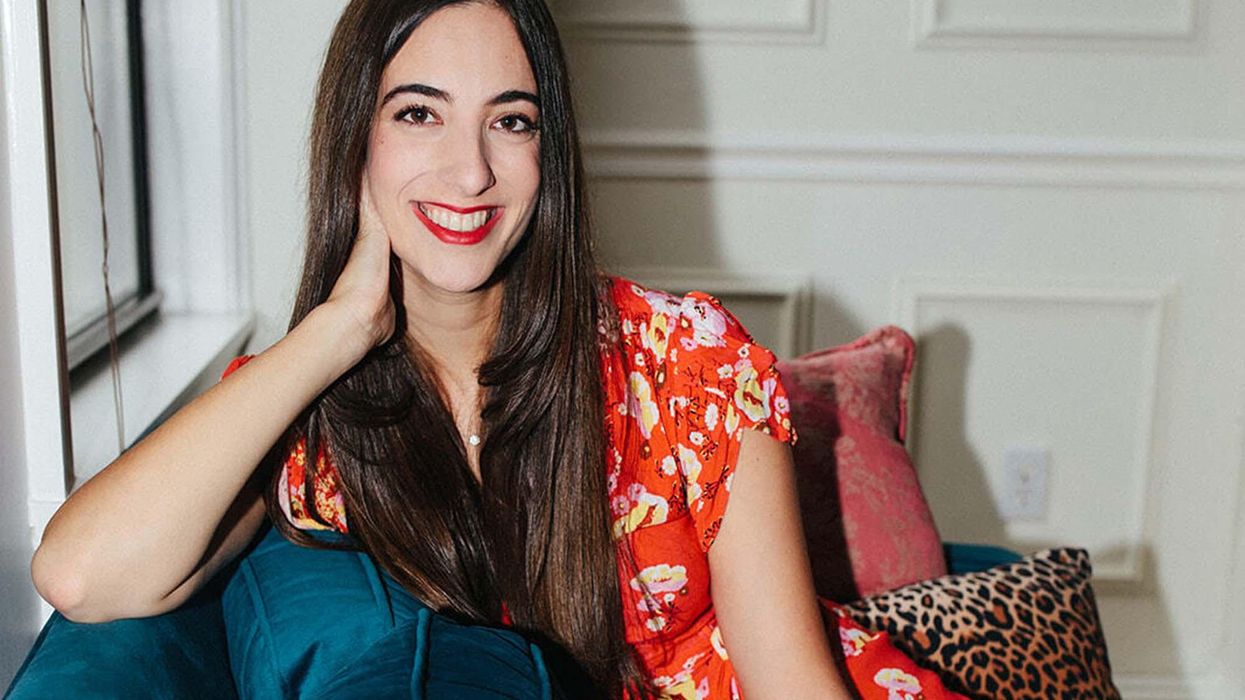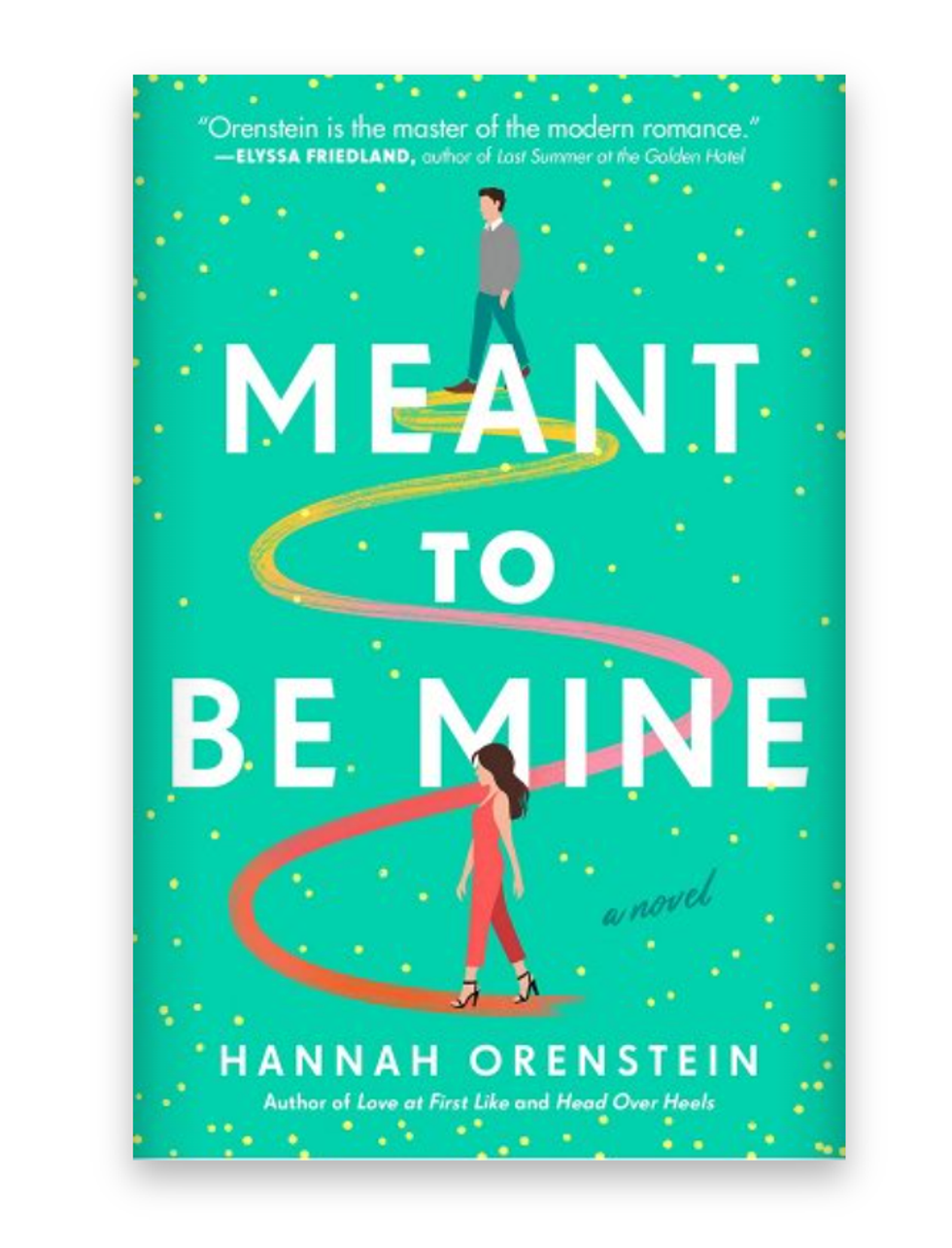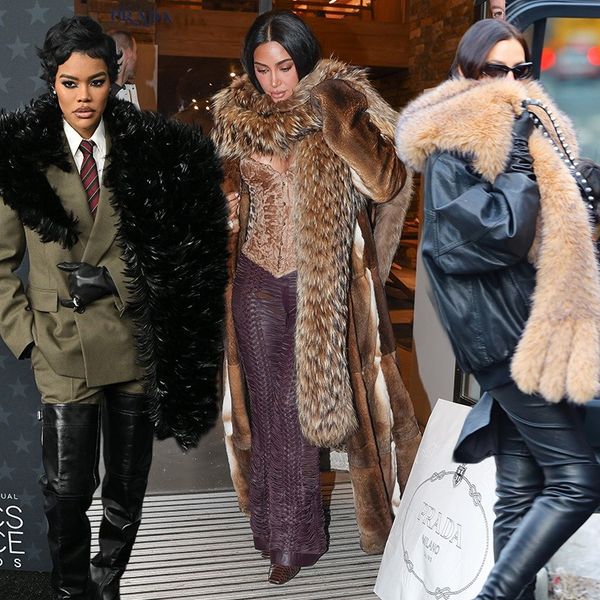How an Author Crafted an Idealized Version of the Fashion Industry in Her Novel
For Hannah Orenstein, tackling size inclusivity, sexism, and the pandemic’s impact on our wardrobes was no small feat.

It all started with a pair of sweatpants. They were gray, shapeless, two sizes too large, and had my company’s logo printed on the left hip—a gift given out at our 2019 holiday party. I couldn’t resist sinking into their cozy warmth every chance I got. After three months of enjoying them on weekend bodega runs, they became a much more permanent part of my wardrobe when the pandemic hit. With nowhere to go, I couldn’t muster up the energy to wear anything else. My sleek leather pants and cool vintage Levi’s only reminded me of how life as we knew it was over.
In the grand scheme of things, this was not a problem. I had my health, my family was safe, and I could easily work from home—it was a privilege to have enough time and energy to even briefly think about clothing. But by April 1, 20 whole days into my quarantine, it felt like I’d been wearing sweats forever. That’s when I had an idea.
I’m a novelist, and at that point, I was 60 pages into writing a murder mystery. I abandoned that project—it was too depressing—and cast around for another topic. Sick of my aforementioned sweatpants, I wanted to dive into a glamorous world. I imagined my new protagonist would be a fashion stylist. (This was truly the very first character detail I came up with.) I missed live music and all the other fun New York City has to offer, so I decided her love interest would be a musician, and they’d have date nights at all my favorite restaurants and bars. I craved travel, so there’d be chapters set in Portland and Miami. Most of all, I wanted to hug my grandparents, so I dreamed up a fabulous matriarch. Two years later, that book hit shelves. It’s called Meant to Be Mine, and it’s about a woman who knows the exact day she’ll meet the love of her life, thanks to a prophecy from her eccentric grandmother.
One of my favorite parts of writing the book was constructing a fictionalized version of New York’s fashion industry. I knew the subject fairly well, thanks to years of interning for fashion magazines and a womenswear designer, as well as reporting on fashion week. I’ve spent my entire career as a writer and editor for lifestyle publications in the city—so while I’m not a fashion industry insider, I’m pretty adjacent. Still, I wanted to learn more, so I started my research.
To flesh out stylist Edie Meyer’s world, first I called Audree Kate López, a stylist living in Manhattan, to get the scoop on what her career looks like behind the scenes. We had crossed paths early on in our careers when I was at Seventeen and she was at Redbook. I’ve been a fan of her work ever since. She has such a knack for styling vibrant, fresh, very New York looks that embody the energy I wanted readers to feel while reading my book.
She told me about the time she styled a pop star with such long, unwieldy nails that she couldn’t put on her own underwear. She talked about a gig styling a rapper who insisted on having lobsters delivered to the set of his photo shoot. Off-camera, López cringed as lobster juice dripped all over the expensive pants she was wearing. I couldn’t resist putting both of those stories in the book. She also considered descriptions of my characters and recommended brands they should wear. (For Edie herself, vintage Versace and Valentino from her grandmother’s closet paired with chunky Lulu Frost jewelry.)
I also used my own experiences in magazines as inspiration. Pre-2020, I went to lots of press previews, which strike me as such a quirky element of the industry. The guests were often familiar to me—typically people who held my same job title at other publications. I could count on there being copious amounts of wine and cheese, and I was always tickled by the unusual perks publicists offered to get busy writers and editors in the door. (I’ve received everything from a dance class led by the Rockettes to Beyoncé tickets.)
In Meant to Be Mine, Edie goes to a press preview and air-kisses the guests she knows: fashion editors, Bachelor contestants-turned-influencers, and “Frank, who does not work in fashion (or seem to work at all), and yet somehow makes an appearance at more industry parties than any of us.” (Don’t we all know a Frank?) She enjoys the brand’s signature cocktail, and after viewing the clothes, listens to a “fireside chat by a renowned career coach,” because what else would a brand specializing in great suits do?Although fashion is often perceived as a cliquish, cut-throat world, the industry has evolved and many stylists and editors I know credit their success to a boss who gave them a life-changing opportunity. In turn, they give back by helping younger folks break into the business. That’s why it was important for me to show Edie’s chain of mentorship: She was inspired and trained by a stylist a few rungs up the career ladder from her, and she meets with aspiring stylists to help them out.
Throughout the book, Edie dreams up outfits for photo shoots, but she also works with a variety of clients—primarily Kiara Walker, an up-and-coming politician running for Congress. I wanted to use her character to highlight the impossible pressures faced by women in the spotlight, especially by women of color. I knew Kiara would realistically be picked apart in the press for her style choices no matter what she wore. For example, in February 2020, Rep. Alexandria Ocasio-Cortez was criticized for wearing a $580 dress to a TV appearance. As a result, in Meant to Be Mine, Edie goes to Zara to find “sleek top-handle bags in imitation leather that look chic without costing the kind of fortune that would inevitably piss off right-wing morning show talking heads.”
I wanted the fashion element of the book to feel realistic in some ways, like the headlines Kiara’s wardrobe could make if she wears the “wrong” thing. But I also wanted to imagine an idyllic version of the fashion world, too: one that champions all kinds of designers (not just the old, rich, white ones) and caters to all shoppers (not just the thin ones). I dreamed up a fictional womenswear brand called Annabelle Crosby. It’s an indie label owned by a Black woman, and because it won a grant from the CFDA, it can produce a fully size-inclusive line of well-cut, colorful suits. In 2020, so many of us doubled down on the importance of supporting small businesses we want to see succeed. With that philosophy in mind, Edie often dresses Kiara—a Black, plus-size woman—in Annabelle’s clothes.
While writing Meant to Be Mine, I didn’t know what the world would look like when the book eventually published in 2022. In the spring of 2020, I assumed we’d all either be stuck in sad sweatsuits or back to actual suits. Now, we’ve clearly landed somewhere in the middle. I don’t know where fashion goes from here, but I’d hope to see more and more small, inclusive businesses like Crosby’s flourish and thrive, and I’d hope everyone can find clothing that makes them feel as confident as Kiara does in those slick, tailored suits. The fashion industry might never look exactly like it did prior to the pandemic, but maybe that’s a good thing.




